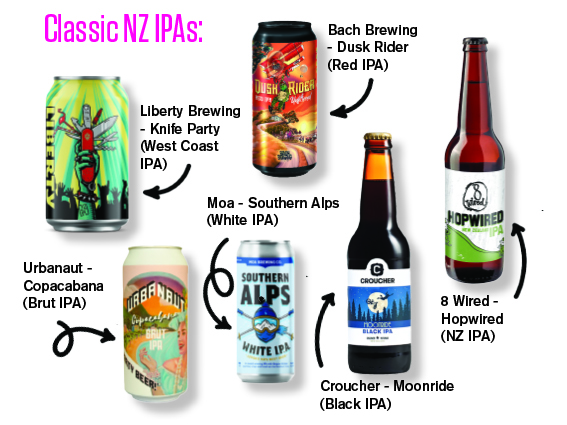IPA. It’s the one beer descriptor that causes the most misunderstanding. If I had a dollar for every time someone asked me “What is an IPA?” I’d not be paying much for my beer.
With a term that’s 350 years old you’d think there would be some uniform acceptance of what it means. Sadly not. And that’s mostly because breweries continue to milk those three letters for all they can.
A brief history lesson first (very brief because people write books on this subject). Before we get to IPA we have to start with Pale Ale. Now, 400 years ago a Pale Ale was relatively pale compared with the standard dark beers of the day such as porter and stout and other dark ales. This was all to do with the way malt was created in a kiln. Without fine temperature control, malt tended to take on a dark colour that was reflected in the colour of the beer.
As maltsters got better at controlling their processes they could make paler malt and thus “pale” ales were invented.
When the British tried to export these pale ales to India, the long voyage by ship in hot conditions tended to spoil the beers. Luckily, beer contains a couple of natural ingredients that prevent spoilage – hops and alcohol. So over time brewers figured out that if you put in more hops and more alcohol the beer travelled better and so the strong hoppy pale ales that were sent to India became known as India Pale Ales (IPA).
It’s weird, given how popular IPAs are today, that there was a time they were in danger of becoming extinct thanks to the rise of mass-produced lager around the world in the latter part of the 20th century. When the first American craft brewers decided they wanted to make anything but Budweiser, they searched the history books and one of the beers they brought back to life in the late 1990s was IPA.
Using bold American hops these upstart breweries produced the strong, bitter and hoppy beers that became synonymous with craft brewing.
The popularity of the new American IPAs eventually spread to New Zealand, where we were quick to follow some of the trends coming out of California in particular. These beers became the standard-bearer for the style and are most commonly referred to as West Coast IPA, pointing to their origins. These IPAs are defined as being very bitter and weighing in at a minimum of 5.8 per cent ABV.
The problem is, IPA became so popular that brewers started using those three little letters as a marketing term rather than a definition of style.
Why make a red ale when you can make a Red IPA? Then we had Black IPA to signify what you might call a hoppy stout. White IPA was applied to the hybrid style that added extra hops to Belgian-style ‘witbier’ (white beer). Then we had the trend of Session IPA to indicate a half-strength IPA. This is solely because it’s easier to sell a “Session IPA” as opposed a normal “pale ale”. So now we have “IPAs” that are as low as 2.5 per cent.
Around a decade ago, some American brewers on the eastern side – around Vermont in particular – started doing their own interpretations of IPA. These were not as insanely bitter as the West Coast IPAs and in contrast to the crystal-clear California benchmarks, these unfiltered beers became known as East Coast IPA, or sometimes New England IPA (NEIPA). Now they’re just called Hazy IPA – and they are the biggest trend in the beer world since the invention of lager.
But the use of IPA doesn’t stop there. Recently we’ve had Brut IPA (for light-bodied, low carb IPA), Mountain IPA – for beers made in Colorado – and Cold IPA which is a kind of super-hoppy American lager fermented at relatively low temperatures (hence the term Cold).
And here in Aotearoa, we now have New Zealand IPA – an IPA that specifically uses New Zealand hops.

